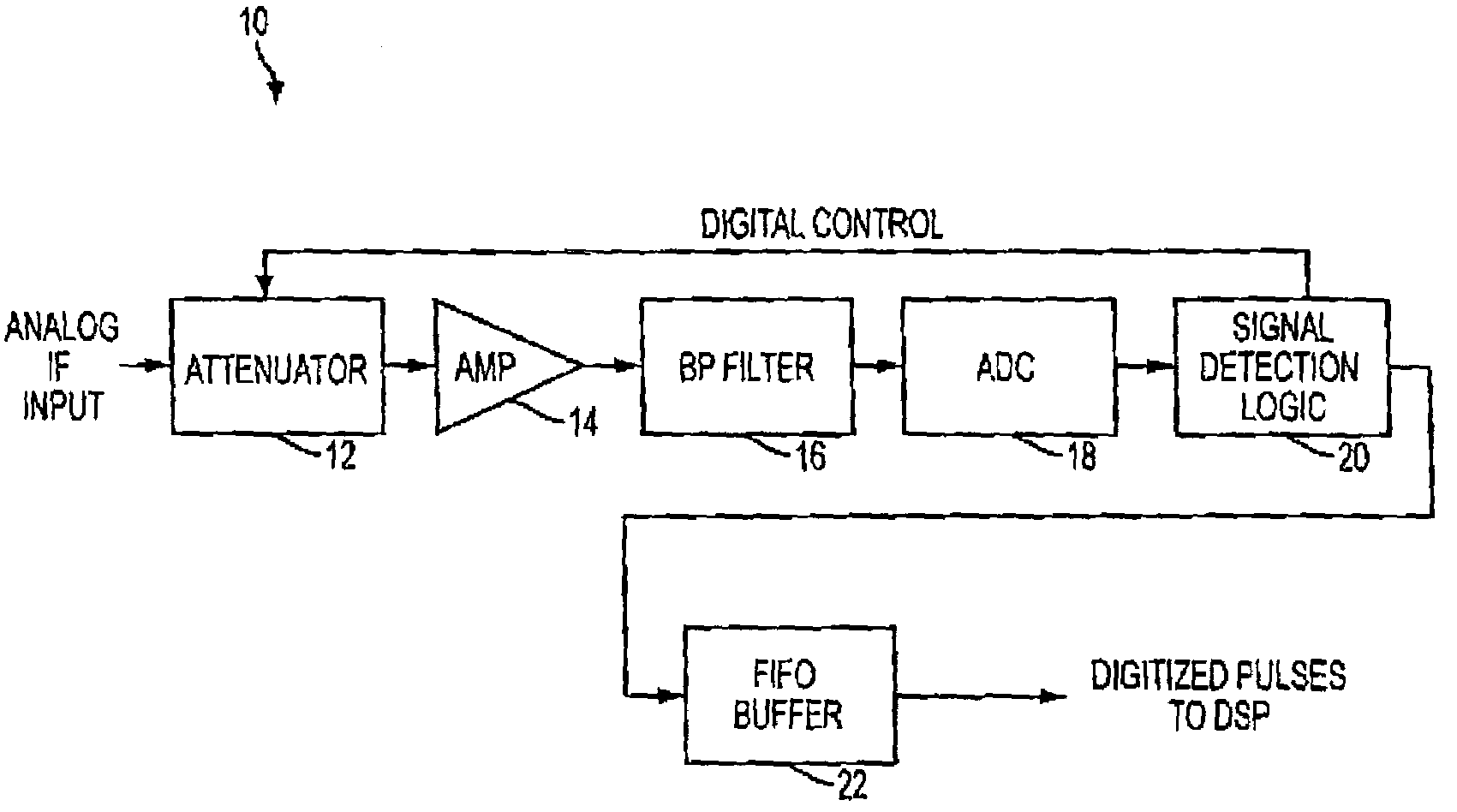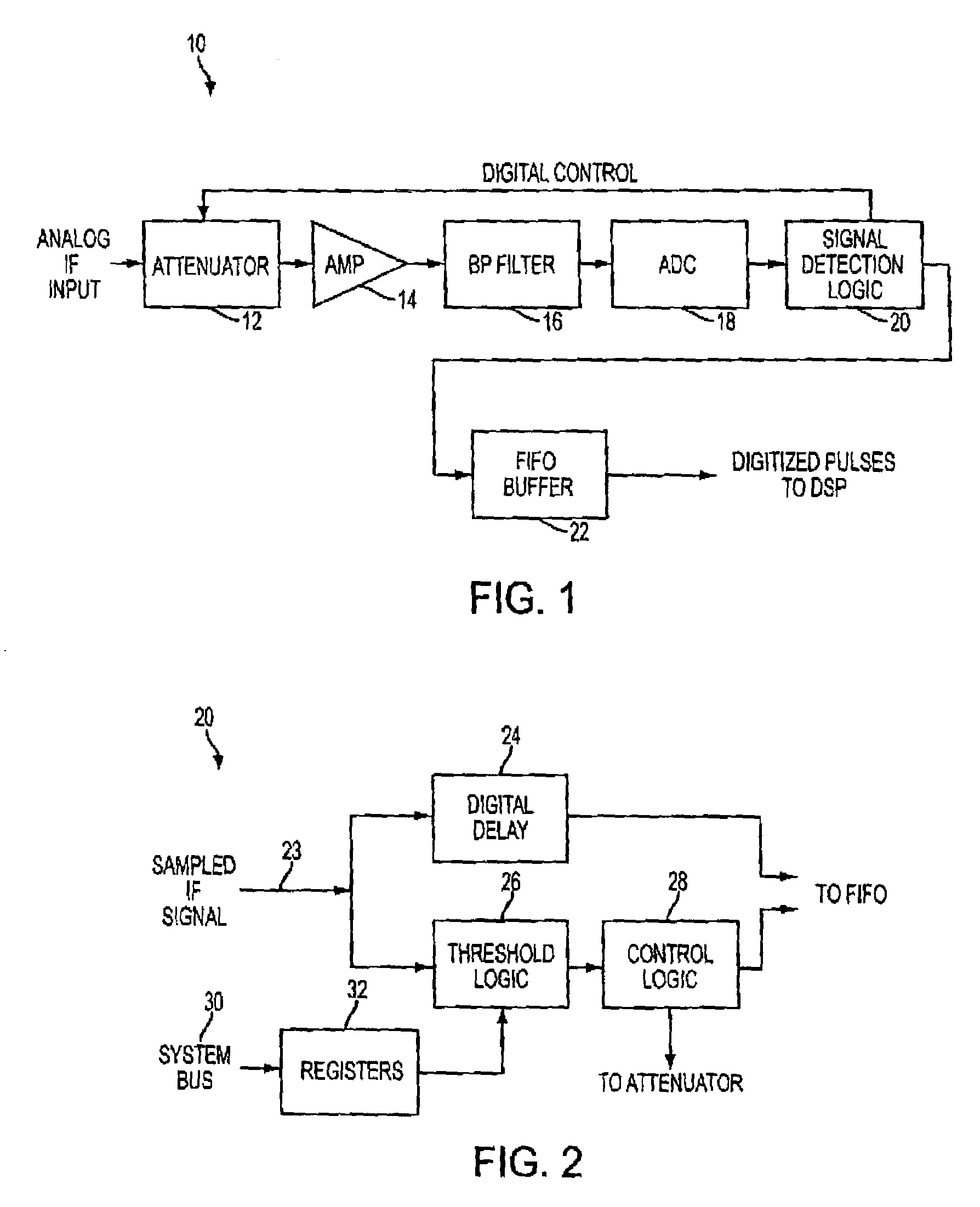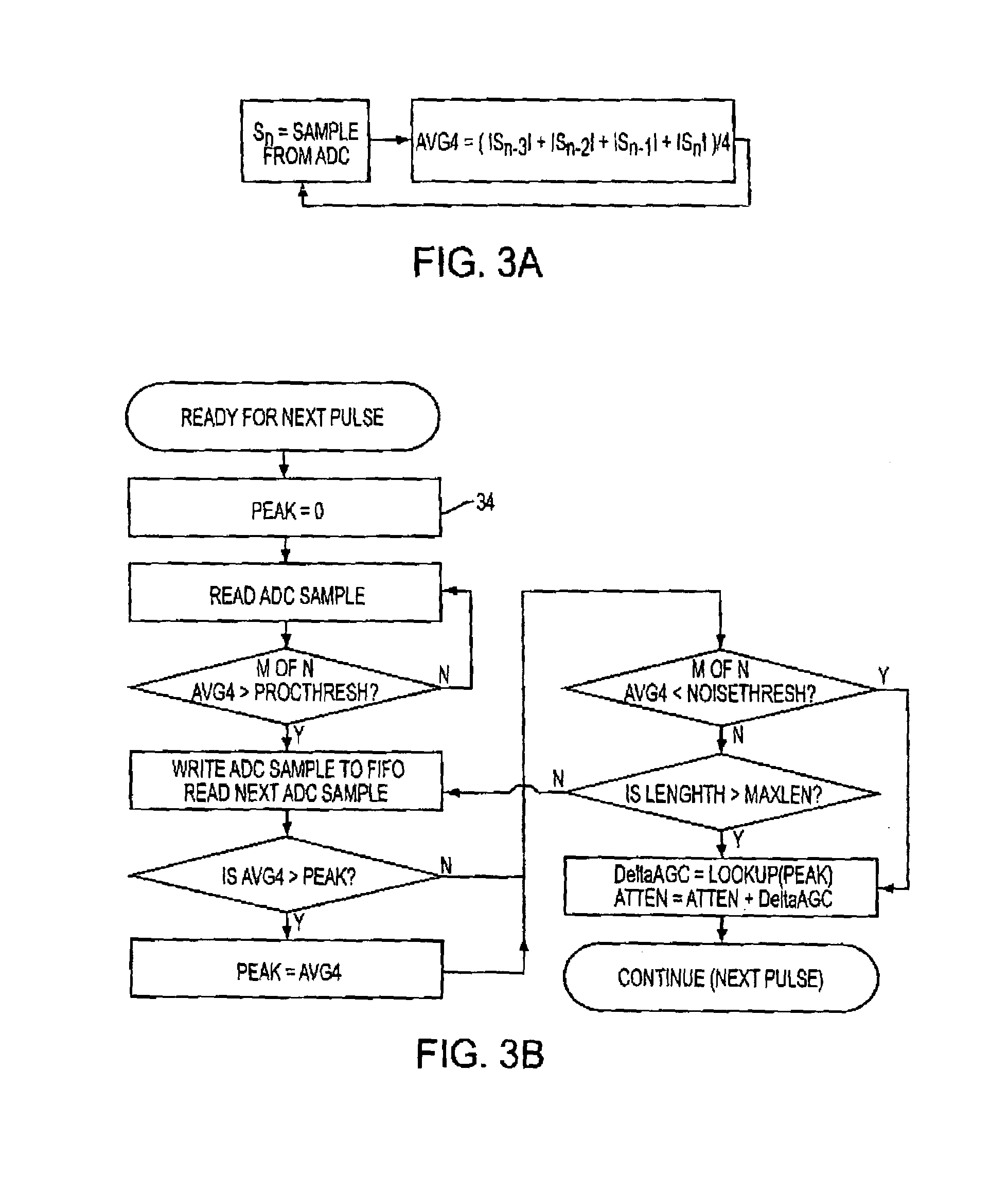Automatic gain control for digitized RF signal processing
a technology of automatic gain control and digitized rf signal, which is applied in the direction of pulse technique, transmission monitoring, instruments, etc., can solve the problems of increasing the cost and complexity of the system, not optimizing or well-suited to detecting and processing radar signals, and analog-based designs, so as to achieve the effect of reducing performan
- Summary
- Abstract
- Description
- Claims
- Application Information
AI Technical Summary
Benefits of technology
Problems solved by technology
Method used
Image
Examples
Embodiment Construction
[0017]A digitized AGC signal processor 10 is illustrated in FIG. 1. In this circuit, an analog IF input signal, e.g. of a received radar pulse converted to an IF as described above, is applied to a variable-gain front end that consists of a digitally controlled attenuator 12 with its output applied to a fixed amplifier 14.
[0018]The output of amplifier 14 goes through a bandpass filter 16 which provides anti-aliasing and noise-reduction functions. The filtered signal is applied to an ADC 18 to produce a digitized output signal that is then applied to a signal detection logic circuit 20. As is further discussed below, circuit 10 preferably employs a ¾ Fs bandpass sampling technique. This technique is preferred over the “synchronous downconverter” approach used in previous art techniques because it eliminates the synchronous downconverter hardware, and it requires only one ADC.
[0019]Logic circuit 20 controls the amount of gain setting for attenuator 16 in order to adjust the analog sig...
PUM
 Login to View More
Login to View More Abstract
Description
Claims
Application Information
 Login to View More
Login to View More - R&D
- Intellectual Property
- Life Sciences
- Materials
- Tech Scout
- Unparalleled Data Quality
- Higher Quality Content
- 60% Fewer Hallucinations
Browse by: Latest US Patents, China's latest patents, Technical Efficacy Thesaurus, Application Domain, Technology Topic, Popular Technical Reports.
© 2025 PatSnap. All rights reserved.Legal|Privacy policy|Modern Slavery Act Transparency Statement|Sitemap|About US| Contact US: help@patsnap.com



